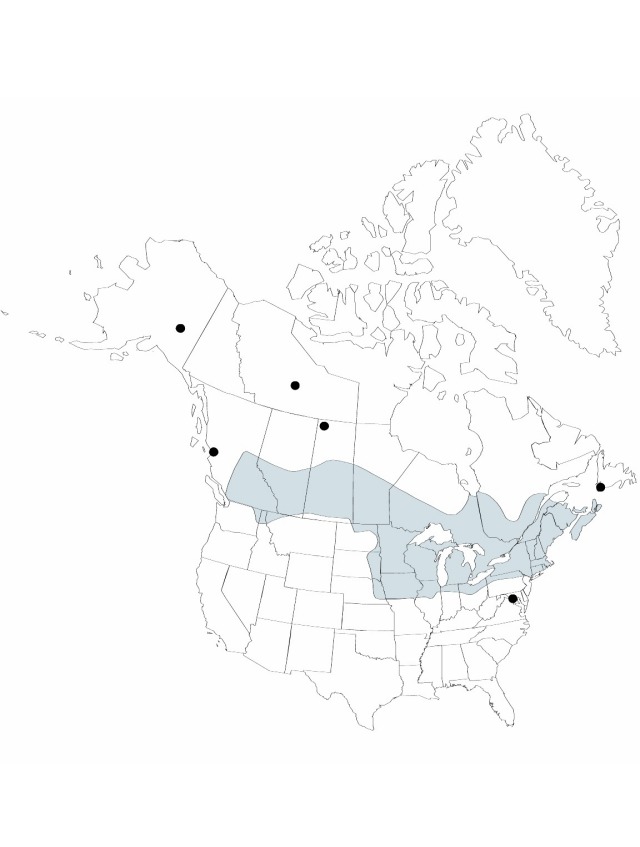Difference between revisions of "Acorus americanus"
New Flora and Botany of North America 1: 57. 1836.
FNA>Volume Importer |
imported>Volume Importer |
||
| Line 8: | Line 8: | ||
}} | }} | ||
|common_names=Sweet-flag;belle-angélique | |common_names=Sweet-flag;belle-angélique | ||
| + | |special_status={{Treatment/ID/Special_status | ||
| + | |code=F | ||
| + | |label=Illustrated | ||
| + | }}{{Treatment/ID/Special_status | ||
| + | |code=E | ||
| + | |label=Endemic | ||
| + | }} | ||
|basionyms={{Treatment/ID/Basionym | |basionyms={{Treatment/ID/Basionym | ||
|name=Acorus calamus var. americanus | |name=Acorus calamus var. americanus | ||
| Line 75: | Line 82: | ||
|publication title=New Flora and Botany of North America | |publication title=New Flora and Botany of North America | ||
|publication year=1836 | |publication year=1836 | ||
| − | |special status= | + | |special status=Illustrated;Endemic |
| − | |source xml=https:// | + | |source xml=https://bibilujan@bitbucket.org/aafc-mbb/fna-data-curation.git/src/bb6b7e3a7de7d3b7888a1ad48c7fd8f5c722d8d6/coarse_grained_fna_xml/V22/V22_42.xml |
|genus=Acorus | |genus=Acorus | ||
|species=Acorus americanus | |species=Acorus americanus | ||
Revision as of 21:22, 27 May 2020
Leaves basally white with pink or red, otherwise bright green; major veins 2–6, ± equally raised above leaf surface; cross section swollen in center, gradually tapering to ends. Vegetative leaves to 1.45 m; sheathing base (proximal part of leaf) 18.1–51.8(–58.8) cm; distal part of leaf 31.2–88.6(–100.4) × 0.3–1.2 cm, usually slightly longer to more than 2 times length of distal leaf, margins usually entire. Sympodial leaf (46–)56.8–148(–166.7) cm, usually equal to or slightly longer than vegetative leaves; sheathing base (20.9–)25.3–74.1(–100.2) cm; distal part of leaf (20.9–)27.9–77.9(–92.6) × 0.3–1.3 cm. Spadix 3.3–7.4(–8.7) cm × 4.7–10(–13.3) mm at anthesis; fruiting spadix 3.5–7.8(–8.8) cm × 6.9–18.2 mm. Flowers 2–3 mm; pollen grains usually deeply staining in aniline blue. Fruits obpyramidal, 4–6 mm. Seeds (1–)6(–14), tan, narrowly oblong to obovate, (2–)3–4 mm. 2n = 24.
Phenology: Flowering late spring–mid summer.
Habitat: Wet open areas, marshes, swales, and along edges of quiet water
Elevation: 0–900 m
Distribution

Alta., B.C., Man., N.B., Nfld. and Labr. (Nfld.), N.W.T., N.S., Ont., P.E.I., Que., Sask., Alaska, Conn., D.C., Idaho, Ill., Ind., Iowa, Maine, Mass., Mich., Minn., Mont., Nebr., N.H., N.J., N.Y., N.Dak., Ohio, Pa., R.I., S.Dak., Vt., Va., Wash., Wis.
Discussion
Acorus americanus, a fertile diploid, occurs from northeastern United States across Canada and the northern plains. Specimens from central Siberia with similar leaf venation were examined, and the species is perhaps holarctic in distribution. Examination of additional material is necessary to determine if northern Asian diploid plants are conspecific with A. americanus. In North America, Native Americans probably played a significant role in the present-day distribution of A. americanus because sweet-flag rhizomes and plants were valued by many groups and were objects of trade. Disjunct populations occur in localities that are often near old Native American village sites or camping areas (M. R. Gilmore 1931).
Acorus americanus is susceptible to infection by Uromyces sparganii (Uredinales).